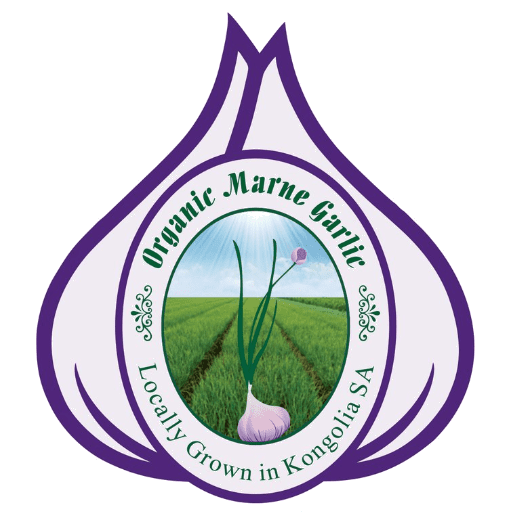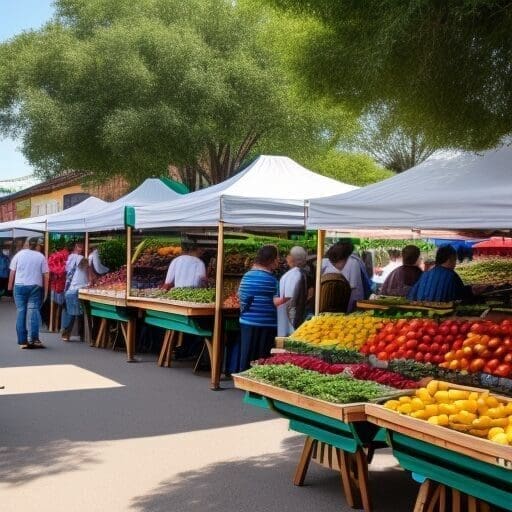Kings Old Station
Early in 2014, we acquired Kings Old Station, a picturesque 40-acre smallholding nestled in the Marne River Valley. This charming property features two river flats paddocks, graced by the tranquil flow of the Marne River and surrounded by majestic river red gums. Additionally, there is a small stand of Mallee and open cleared paddocks above. Originally serving as a mixed farm and a stopover night paddock for a stock route, Kings Old Station still treasures remnants of its past with various original outbuildings. These include the bough shed (stables), dairy (now curing shed), foundry, lime kiln, and the original 1860s kitchen. Over time, the property has witnessed the evolution of living quarters, culminating in the splendid 1920s sand and limestone art deco gentlemen’s bungalow where we are delighted to call home.
Our Vision & Dream
our
Australian Striped Purple Garlic
how it all started
2014
In 2014, we had our water and soils tested and analyzed to determine the best crop for our property, and also considering climate, the choice was made, we settled on Garlic. In 2015 we purchased 30kg of seed and despite being novices in large scale production, we diligently tilled and prepared the soils with bio char, planting the seed in a ¼ acre area. Initially using overhead watering techniques, we soon realized that soil preparation and watering alone were not enough. Our commitment to organic principles required us to tackle the challenge of weeds, resulting in back-breaking daily effort of hand weeding and using a small rotary hoe for months on end. Despite losing half of our planting to weeds, the garlic we harvested from 1/8 of an acre turned out to be fantastic – big, bold, and spicy. Welcome to Organic Marne Garlic!
2016
At Organic Marne Garlic, we weathered challenges and learned valuable lessons from the 2015 crop. Understanding the importance of weed control, we implemented mulching techniques. Collaborating with local farmers, we obtained damaged lucerne and processed it using an industrial hammer mill. To enrich the soil, we incorporated Bio char and certified organic fertilizer, followed by a 3-inch layer of mulched lucerne spread across half an acre. In March, during a waning moon, we meticulously hand-planted approximately 20,000 cloves. The season commenced admirably, with the cloves sprouting within days. Hand weeding became significantly easier, thanks to the efficient absorption of overhead watering, which reduced water usage. Throughout the year, progress remained positive until late September and early October, when the Marne experienced an unexpected flood. Despite submersion for a few days, our resilient garlic survived, and we were immensely grateful. However, a fortnight later, a second flood wreaked havoc, stripping away the mulch, damaging our fences, and submerging the garlic for a week. At that point, our hopes seemed bleak, but the garlic persevered. We were able to hand-harvest an exceptional crop, albeit with water and soil marks on the outer skins. In mid-November, we hung the garlic in the old styles for curing. Unfortunately, inclement weather comprising constant rain and humidity throughout November and December led to black mold affecting the outer skins of the corms. Nonetheless, we managed to sell the unaffected portion, with the majority of the garlic once again preserved for seed.
2017
Organic Marne Garlic learned valuable lessons from the previous two years and decided to embrace new ideas. While sticking with soil prep and fertilizers, we made a change by exploring and sourcing certified organic and bio-degradable weed mat instead of mulch. With a ¾ acre area, we planted a total of 55,000 cloves during the waning moon of March. Despite using overhead watering and witnessing promising growth, in June, we received a job offer to assist an ailing Aboriginal community and Corporation in the Kimberely. As a result, Christine’s brother Dave stepped in as caretaker of the farm and Garlic. Unfortunately, we were unable to return for the harvest. However, our time spent over the course of three years in collaborating with the council and elders to revitalize the community has been truly remarkable.
2020
We returned to the farm after it had remained idle for three years. The land was worn and exhausted, requiring us to start from scratch. Fortunately, Dave managed to secure a buyer for the 2017 crop, allowing us to harvest 300kg for seed stock. This covered the cost of the weed mat we used. Surprisingly, despite a three-year drought during our absence, there were still remnants of garlic in the planting area. We salvaged three kilos of seed and began anew, using organic bio char, fertilizers, and a weed mat. However, this time we implemented drip irrigation underneath the mat to conserve our water license. We planted this seed in 2021 and were delighted to produce over 20 kilos for the following season. At Organic Marne Garlic, we remain committed to cultivating quality garlic while embracing sustainable practices.
2022
After seeing substantial water usage savings by trailing the drippers under the weed mat, we at Organic Marne Garlic adopted this practice. Upon our return, Christine reestablished the vermiculture beds while I configured the watering system, using a venturi pump to feed in the worm juice and fish emulsion that we had been making by fishing for carp and fermenting them in food grade 1000lt IBCs. In addition, Christine researched water softeners as our bore water had increased to 1430 ppm. Although it was only a slight increase, we wanted to minimize the scaling of the dripper lines caused by minerals in the water. To address this, we now employ alkaway grow flow magnetics at the bore head, which effectively reverses the ions of the minerals in the water. This not only reverses or removes minerals in the irrigation system, but also unlocks and makes the minerals in the water and soil usable by our garlic. Following soil preparation, fertilizer, drippers, and weed mat, we planted out two 100-meter lands with our well-seasoned and acclimatized seed stock. As a result, we had a successful harvest that was large, full, and bursting with flavor. We are proud to consider our garlic of exceptional quality, and others share this sentiment. This year, we ventured into advertising on local Facebook pages and through our valued outlets, below.














